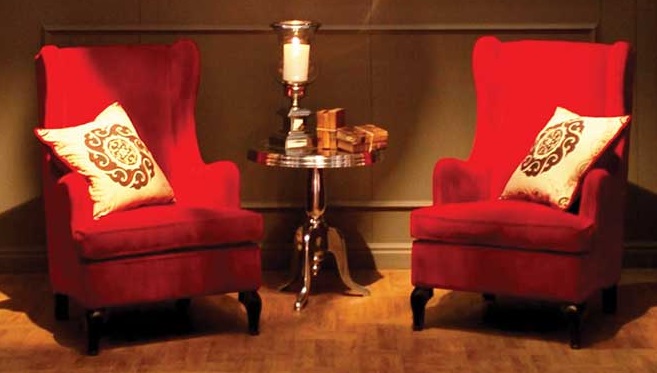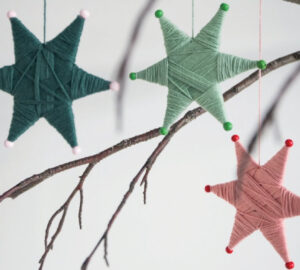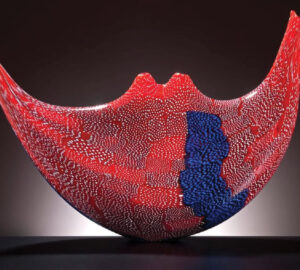i’m seeing red!
The next time you want to paint a room red or get a fabulous red fabric, think of the meaning that color has held throughout history.
This vibrant hue can be traced back at least to the late Stone Age. Wall paintings were discovered in an archeological site off the coast of South Africa with a red hue made by grinding ochre. In fact, plants were used in most early color, and some are still used today. In ancient times, the roots of the madder plant could be made into a dye that had widespread use in Europe, Africa and Asia. It was used for many years until other plant and insect sources were discovered to yield red.
Interestingly, color has always been assigned meaning by different cultures. The ancient Egyptians related it to life, health and victory. The flip side was related to heat, burning and the evils of hell.
Red also had its place in the makeup world from early times. Helena Rubenstein and Coco Chanel were not the first to use red in cosmetics; the ingenious Egyptians reddened their cheeks and lips with ochre and used the henna plant to redden hair.
The ancient Chinese, too, revered red. Going back to the Yangshao period (5000-3000 B.C.), red and black were used for pottery decoration. It was discovered later in the Han dynasty (200 B.C. to 200 A.D.) that by heating a lead white pigment, they could make a red pigment that they named ch-ien tan. The Chinese believed the world was the compilation of five elements: metal, wood, water, fire and earth. Each was assigned a color and, of course, fire was red. The Silk Road introduced their wares to a broader audience and made widespread their use of red. Silk, pottery, jewelry and textiles began to flood the commerce market.
Early American Indians made a red dye from the cochineal insect. Early textiles in Peru also have been discovered to use this form of dye.
The ancient Greek and Minoan people used red to decorate palaces, as well as other decorative items of their culture. But it was the Romans who really took the color to the next level when they used it for religious and royal symbolism. From gladiators to the Pope’s shoes, red became a symbol of force and power. When Rome fell, the Byzantines took up the red banner for their emperors.
Eventually, merchants and townspeople began wearing red, at first for festivals and then as a sign of success. The Renaissance used red in paintings to draw the viewer in. The Venetian artist Titian used it most masterfully in his process of layering and mixing it with a semi-transparent glaze to give it a depth not previously seen in the art world. Luminosity at its finest!
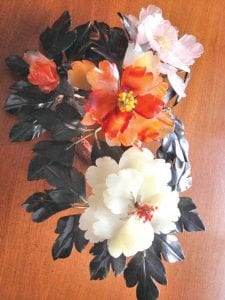 timeless: joyful jade
timeless: joyful jade
When I was a young boy, my mother decided to collect jade figures. That began my lifelong love of all things made from jade.
This year, a very dear friend passed away, and I inherited her jade flower collection. It means the world to me. I wanted to better educate myself on the art of jade decorative items, and I thought I’d take you along for the ride!
The Chinese believe jade is a link between the physical and the spiritual: day and night, good and evil, yin and yang. In their culture, symbolism is quite distinct: peaches=longevity, lotus plants=harmony, bats=good fortune.
Interestingly, this gemstone can take on many forms, all under the blanket term ‘jade.’ Nephrite and jadeite are the two types of jade, the latter being more expensive and available in more colors. Nephrite is the softer of the two, and today most of it comes from Burma.
Westerners love their precious gemstones, but in the East, jade is the prized element for jewels and royalty. If you are in the market for it, beware of fakes; it is apparently very easy to make ordinary materials—glass, plastic or quartz—look like jade. If you can feel a rough edge, chances are it’s fake. Also, anything you see with air bubbles will signal an imitation as well.
You can find jade decorative items in shops and online in a broad price range. Depending on the size and detail, items can run from a few dollars to a few thousand. If you want to be a serious collector, it is best to have a licensed gemologist examine before you buy. Or you can buy it just because it’s pretty and brings you joy.
design redux
it’s makeover time!
Soon the holiday decorations will come down, and the house will look bare. It brings to mind the idea of a new year and a new look. Non-professional decorating mortals are probably unaware that nearly every furniture, accessory and fabric line introduces new products at least twice a year at markets. The number of products to choose from is endless! Here are tips for the post-holiday decorating blahs: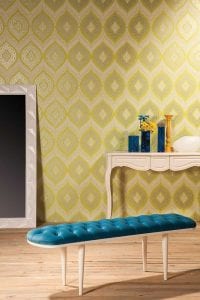
>You don’t have to change everything. Sometimes just a new paint color or new toss pillows and lampshades can make all the difference. Small things do matter, and it is the attention to detail that drives the bigger picture.
>Wallpaper has made a big comeback. If you are the conservative type when it comes to decorating, maybe use wallpaper on an accent wall to make one of your colors more dominant. Don’t be afraid.
>Change your overhead light fixtures. All too often we purchase a home with existing fixtures that are not our taste, nor do they blend with our style of furnishings. This one change can have a huge impact on the mood and level of finish of your room. And don’t forget to use a dimmer. No one, I mean no one, looks good in bright light after 5 p.m.
>Call your design professional. This is not said out of self-interest. There are more reasons to use an interior designer than not to use one. For the investment you make, it can save you far more dollars in mistakes. Happy New Year, and here’s to a new look!





